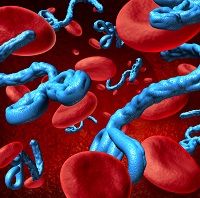Article
CDC Approves New Ebola Treatment Centers
Author(s):
While there are currently no active cases of Ebola virus infection in the United States, the US Centers for Disease Control and Prevention has announced that 35 hospitals across the country are now designated treatment centers for the virus.

While there are currently no active cases of Ebola virus infection in the United States, the US Centers for Disease Control and Prevention (CDC) has announced that 35 hospitals across the country are now designated treatment centers for the virus.
Prior to the most recent Ebola crisis there had been only a handful of hospitals specifically set up as treatment facilities for patients infected with the virus, including Emory University Hospital, the Nebraska Medical Center, and the National Institutes of Health. The expanded list of designations was announced after extensive work and coordination between officials on the local, state, and national levels. According to a press release from the CDC the newly designated centers “are staffed, equipped and have been assessed to have current capabilities, training and resources to provide the complex treatment necessary to care for a person with Ebola while minimizing risk to health care workers.”
Health and Human Services Secretary Sylvia M. Burwell said the addition of these facilities to the official list of treatment locations will help should more Ebola patients need to be treated during future outbreaks.
“We continue our efforts to strengthen domestic preparedness and hospital readiness,” she said.
The CDC statement noted that more than 80% of people who have been to countries where the outbreak is most severe live within 200 miles of an officially designated treatment center. Those who are deemed to be at risk of exposure would then be in close contact with health officials during the 21-day incubation period for the virus.
“As long as Ebola is spreading in West Africa, we must prepare for the possibility of additional cases in the United States,” noted CDC Director Tom Frieden, MD, MPH. “We are implementing and constantly strengthening multiple levels of protection, including increasing the number of hospitals that have the training and capabilities to manage the complex care of an Ebola patient. These hospitals have worked hard to rigorously assess their capabilities and train their staff.”
According to the statement, there will be more facilities added to the list in the future to “further broaden geographic reach.” As part of the effort to add more certified facilities, the CDC released guidance to potential locations to assist in the process.
Intended for state and local health departments as well as the hospitals themselves, the guidelines provide three key points that need to be considered when determining whether a facility can be a potential care center:
1. Ebola treatment centers are prepared to provide comprehensive care to persons diagnosed with Ebola virus disease for the duration of a patient’s illness
2. Functioning as an Ebola treatment center will be a decision between state and local health authorities and the hospital administration, informed by the results of a CDC site visit conducted
by an interdisciplinary team of subject matter experts.
3. Decisions to receive a confirmed Ebola patient should be informed by discussions with public health authorities and referring physicians, depending on the status of the patient.
So far teams from the CDC have inspected more than 50 hospitals in 15 states as well as the District of Columbia to determine their readiness as Ebola treatment centers.
The CDC statement also noted that while these are the first centers to be officially designated for treating the virus, “all health care workers at hospitals and other health care facilities should be trained and able to recognized symptoms, safely isolate a potential Ebola patient, and contact public health authorities for guidance on the next steps for safely managing the patient.”
There are also now 42 laboratories at the state and local level that can conduct rapid testing for the virus. Just four months ago, only the CDC and the US Armed Forces laboratory could conduct the tests.





